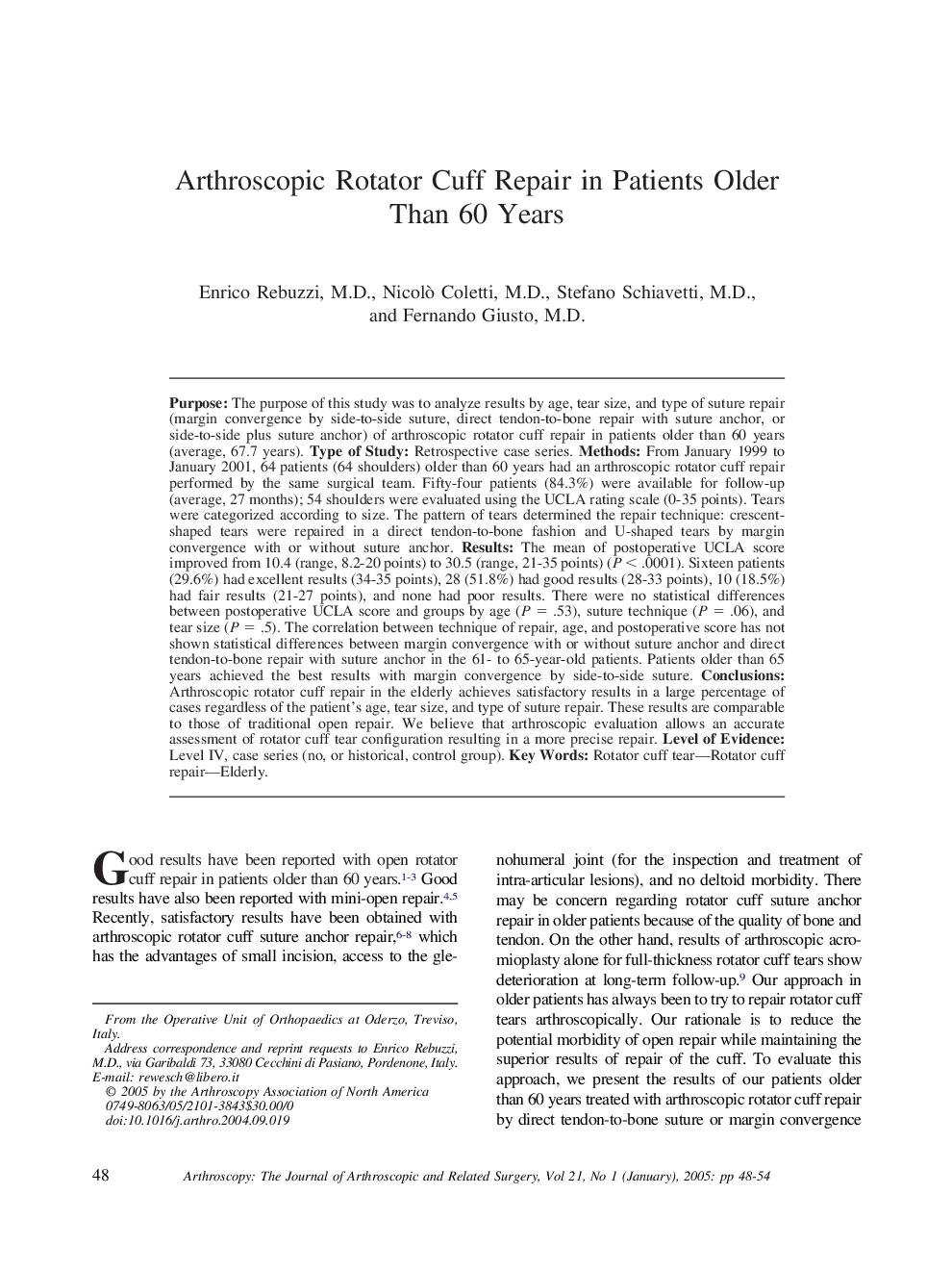| Article ID | Journal | Published Year | Pages | File Type |
|---|---|---|---|---|
| 10079275 | Arthroscopy: The Journal of Arthroscopic & Related Surgery | 2005 | 7 Pages |
Abstract
Purpose: The purpose of this study was to analyze results by age, tear size, and type of suture repair (margin convergence by side-to-side suture, direct tendon-to-bone repair with suture anchor, or side-to-side plus suture anchor) of arthroscopic rotator cuff repair in patients older than 60 years (average, 67.7 years). Type of Study: Retrospective case series. Methods: From January 1999 to January 2001, 64 patients (64 shoulders) older than 60 years had an arthroscopic rotator cuff repair performed by the same surgical team. Fifty-four patients (84.3%) were available for follow-up (average, 27 months); 54 shoulders were evaluated using the UCLA rating scale (0-35 points). Tears were categorized according to size. The pattern of tears determined the repair technique: crescent-shaped tears were repaired in a direct tendon-to-bone fashion and U-shaped tears by margin convergence with or without suture anchor. Results: The mean of postoperative UCLA score improved from 10.4 (range, 8.2-20 points) to 30.5 (range, 21-35 points) (P < .0001). Sixteen patients (29.6%) had excellent results (34-35 points), 28 (51.8%) had good results (28-33 points), 10 (18.5%) had fair results (21-27 points), and none had poor results. There were no statistical differences between postoperative UCLA score and groups by age (P = .53), suture technique (P = .06), and tear size (P = .5). The correlation between technique of repair, age, and postoperative score has not shown statistical differences between margin convergence with or without suture anchor and direct tendon-to-bone repair with suture anchor in the 61- to 65-year-old patients. Patients older than 65 years achieved the best results with margin convergence by side-to-side suture. Conclusions: Arthroscopic rotator cuff repair in the elderly achieves satisfactory results in a large percentage of cases regardless of the patient's age, tear size, and type of suture repair. These results are comparable to those of traditional open repair. We believe that arthroscopic evaluation allows an accurate assessment of rotator cuff tear configuration resulting in a more precise repair. Level of Evidence: Level IV, case series (no, or historical, control group).
Related Topics
Health Sciences
Medicine and Dentistry
Orthopedics, Sports Medicine and Rehabilitation
Authors
Enrico M.D., Nicolò M.D., Stefano M.D., Fernando M.D.,
